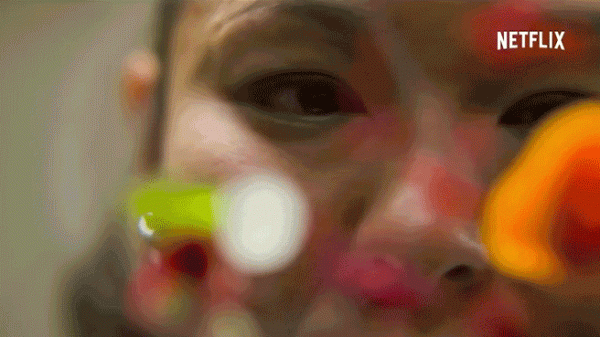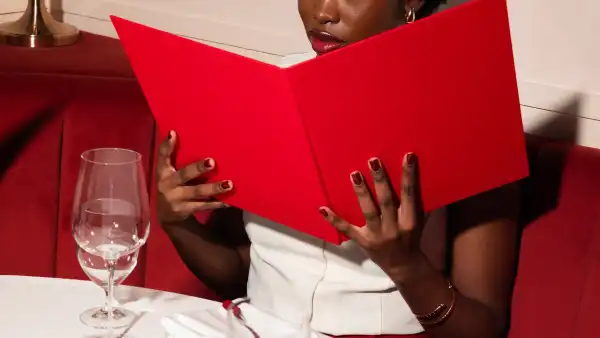
In his 1980 film, “Sauve Qui Peut (La Vie),” a masterful and melancholic study of sex and romance, Jean-Luc Godard fell in love with slow motion: reducing his film speed frame by frame, he extended moments of flickering, rapid movement—a character flying down the street on a bicycle, or leaping over a table to tackle a lover—to an almost abstracted stillness, turning actions into objects, verbs into nouns. The technique was so essential to “Sauve Qui Peut (La Vie)” that, when it was released in the United Kingdom, it was given the title “Slow Motion.” (The U.S. title, “Every Man for Himself,” is translated from the French. ) “You use slow motion in a way I find unusual,” Dick Cavett told Godard when the auteur appeared on Cavett’s talk show to promote the film. “How would it have been any different if you had just decided to have that at the normal speed?” “This is precisely the point,” Godard replied, chain-smoking in a tweed sport coat and tinted glasses. He relied on slow motion, he added, “when, at the normal speed, it was not possible to see things—or at least to indicate possibility . . . that there is something different to be seen.”
I thought of this exchange recently while settling in to watch the recently released sixth season of “Chef’s Table,” the Netflix anthology series that, since its début, in 2015, has devoted thirty episodes to limning the lives and skills of the world’s most celebrated restaurant cooks. Each installment of the show is a self-contained portrait, tracing the arc of an individual’s life from hungry mortal to culinary icon: childhood influences, adolescent traumas, the triumphs and pitfalls of single-minded ambition. It would be wrong to call each episode a profile, or even a biography: “Chef’s Table” is willfully uncritical of its subjects, treating each chef with a reverence that verges on the religious. The show’s creator-producer, David Gelb, achieves this hallowed mood by leaning heavily on a handful of cinematic techniques: symmetrically framed shots, soaring classical music, and so much slow motion that one suspects the hour-long episodes, cranked up to normal speed, might be over and done in fifteen minutes.
“Chef’s Table” ’s copious slow motion gets a lot of grief—“lazy emotional steroids,” the writer Joshua David Stein complained, recapping the second season for Eater. The show’s style lends itself, with almost obscene efficiency, to parody. In a comic interlude of the series “Ugly Delicious,” for instance, the chef David Chang is slicing eggplant in slow motion to a soundtrack of Vivaldi’s “Four Seasons” (the same piece used for “Chef’s Table” ’s opening sequence) when the knife slips, and the camera shifts its embrace from the elegiacally artful placement of garnishes to balletic arcs of spraying blood. The comedy series “Documentary Now!” features a glorious episode called “Juan Likes Rice and Chicken,” a spoof on Gelb’s 2011 film, “Jiro Dreams of Sushi,” that features chickens being air-cannoned at walls and bananas being sliced lengthwise with agonizing eroticism. What’s mockable, in the end, is less the slow motion or the string-heavy adagios than the tendency to veer from eloquent to vainglorious and back again.
Even when one knows all of its tricks, “Chef’s Table” enraptures. Like “Jiro Dreams of Sushi,” where Gelb established this visual language, the show is an exercise in sensory translation, telegraphing the experiences of taste and touch within the limited visual transmission of film. The staccato actions of chopping or slicing, slowed down, turn into studies in texture and form: the contrast of metal against wood; grains of rice like tumbling leaves; dense threads of piscine muscle catching and dropping the light; sauces that drape like cloth and rest, glossy and opaque, before surface tension collapses. (A confession: I often watch “Chef’s Table” with the sound off, sans captions—no story, please, just the porn.)
I spoke with Gelb a few weeks ago, in the course of reporting a profile of Niki Nakayama, a Los Angeles chef who was featured on the first season of “Chef’s Table.” Gelb explained to me that the show makes use of a combination of shooting techniques, which involves not only increasing the number of frames shot per second (which, when played at a normal rate, creates the slow-motion effect) but also exposing each frame for an abbreviated length of time. The result is an uncommonly razor-crisp series of images, instead of—as in Godard’s film, which was slowed from a standard frame rate—a dreamlike blur. Closed-shutter shooting is often used to capture and aestheticize complex action, like live sports or extravagant violence. Gelb told me that he’d been inspired to apply the technique to food after seeing “Saving Private Ryan,” particularly the opening scene on Normandy Beach. “It had this incredible energy,” he said. “When a mortar would blow up on the beach, you’d see every grain of sand from the explosion—the violence was incredibly sharp and articulated, yet it wasn’t sped up at all.”
Like a bloody battlefield, food filmed in slow motion is both aestheticized and unnervingly visceral. Flesh looks even more like flesh. A lobe of foie gras in a hot pan sweats out slow pearls of fat. Pink chickens trussed and hung over an open flame swing in the smoke like condemned prisoners. It’s strange and grotesque and riveting to look at food like this: how a knife moving through fruit creates a weeping wound, or the way pasta dough stretches and glistens like skin. “It can be a jab or a caress,” Godard explained to Cavett in their conversation, noting the limitations of observing at the speed of reality. “It would be too sentimental or too violent, and it had to be both together.”
Sourse: newyorker.com






